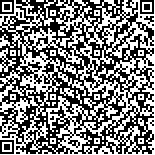| Quote
: |
余怡嫔, 梁昊, 董文波, 李欣春, 易琼, 谭朵廷, 胡志希, 李琳.三种心力衰竭大鼠模型的病理差异及中医证候评价[J].湖南中医药大学学报英文版,2024,44(5):737-743.[Click to copy
] |
|
| |
|
|
| This paper
:Browser 566times Download 266times |
| 三种心力衰竭大鼠模型的病理差异及中医证候评价 |
| 余怡嫔,梁昊,董文波,李欣春,易琼,谭朵廷,胡志希,李琳 |
| (湖南中医药大学, 湖南 长沙 410208;湖南中医药大学中医诊断研究所, 湖南 长沙 410208;北海市第二人民医院, 广西 北海 536000;湖南中医药大学第一附属医院, 湖南 长沙 410007) |
| 摘要: |
| 目的 对多柔比星(doxorubicin, DOX)、高血压和异丙肾上腺素(isoproterenol, ISO)诱导的心力衰竭(以下简称“心衰”)大鼠模型在造模过程、病理特点等方面进行比较,并对其中医证候进行评价,以助研究者选择适当的模型。方法 30只雄性Dahl盐敏感性大鼠为高血压心衰模型组(8% NaCl高盐饲料喂养,连续喂养20周);60只雄性SD大鼠随机均分为DOX心衰模型组(DOX 1.5 mg/kg,每周2次,腹腔注射,共7周)和ISO心衰模型组[ISO 5 mg/(kg·d),连续7 d,腹腔注射,再继续饲养3周];另取10只雄性SD大鼠作为空白对照组。对大鼠心脏、肾脏、肝脏进行HE染色,对心肌细胞进行Masson染色;用ELISA法检测大鼠血清N末端脑钠肽前体(N-terminal pro-brain natriuretic peptide, NT-proBNP)水平;用超声心动图评估大鼠的心脏功能;结合自然状态和一般体征探讨3种心衰大鼠模型的中医证型。结果 与空白对照组比较,DOX心衰模型组大鼠活动量减少、体温降低、水肿明显;高血压心衰模型组大鼠精神不振、尿量减少并且水肿;ISO心衰模型组大鼠活动减少、体温下降、大便稀软;DOX心衰模型组和高血压心衰模型组的肾脏均有较严重的病理损伤,ISO心衰模型组仅有心脏损伤;3种心衰模型组血清NT-proBNP均增加(P<0.05)、左室射血分数(left ventricular ejection fractions, LVEF)和左室短轴缩短率(left ventricular fraction shortening, LVFS)均降低(P<0.05)。DOX心衰模型组和ISO心衰模型组中医证候为阳虚证,高血压心衰模型组中医证候为气阴两虚证。结论 根据大鼠的宏观表现和微观指标,3种模型病理有较大差异,应慎重选择;DOX和ISO心衰模型可能为阳虚证,高血压心衰模型可能为气阴两虚证。 |
| 关键词: 心力衰竭 大鼠模型 病因造模 病理差异 中医证候 模型评价 |
| DOI:10.3969/j.issn.1674-070X.2024.05.004 |
| Received:October 16, 2023 |
| 基金项目:国家自然科学基金面上项目(82274411,82274412);湖南省自然科学基金面上项目(2022JJ40300);湖南省自然科学基金项目(2023JJ30453);湖南中医药大学科研基金“揭榜挂帅”专项项目(2022XJJB002);湖南省青年科技创新人才项目(2022RC1021)。 |
|
| Pathological differences and Chinese medicine pattern evaluation of three rat models of heart failure |
| YU Yipin, LIANG Hao, DONG Wenbo, LI Xinchun, YI Qiong, TAN Duoting, HU Zhixi, LI Lin |
| (Hunan University of Chinese Medicine, Changsha, Hunan 410208, China;Hunan Institute of Chinese Medicine Diagnosis, Changsha, Hunan 410208, China;The Second People's Hospital of Beihai, Beihai, Guangxi 536000, China;The First Hospital of Hunan University of Chinese Medicine, Changsha, Hunan 410007, China) |
| Abstract: |
| Objective To compare rat models of heart failure induced by doxorubicin (DOX), hypertension, and isoproterenol (ISO) in terms of modelling process and pathological features and to evaluate their Chinese medicine patterns to assist researchers in selecting appropriate models. Methods Thirty male Dahl salt-sensitive rats were used as the hypertensive heart failure model group (8% NaCl high-salt chow fed continuously for 20 weeks); sixty male SD rats were divided randomly and equally into the DOX heart failure model (DOX 1.5 mg/kg, intraperitoneally injected twice weekly for 7 weeks) and the ISO heart failure model groups [ISO 5 mg/(kg·d), intraperitoneally injected for 7 consecutive days and then continued feeding for another 3 weeks]; and another 10 male SD rats were used as blank control group. HE staining was used to dye the hearts, kidneys, and livers of rats and Masson staining was used to dye cardiomyocytes; serum levels of N-terminal pro-brain natriuretic peptide (NT-proBNP) were determined by ELISA; and the cardiac function of rats was evaluated by echocardiography. Combined with the natural state and general signs, the Chinese medicine patterns of three heart failure rat models were also explored. Results Compared with the blank control group, the rats in the DOX heart failure model group had reduced activity, decreased body temperature, and obvious edema; the rats in the hypertensive heart failure model group showed lassitude, reduced urine output, and edema; and rats in the ISO heart failure model group showed reduced activity, decreased body temperature, and loose stool. The DOX and hypertensive heart failure model groups showed relatively serious pathological damage in the kidneys, while the ISO heart failure model group only had heart damage. Serum levels of NT-proBNP of the three heart failure model groups all increased (P<0.05), while left ventricular ejection fractions (LVEF) and left ventricular fraction shortening (LVFS) both decreased (P<0.05). The Chinese medicine pattern of the DOX heart failure model and ISO heart failure model groups was yang deficiency, while that of the hypertensive heart failure model group was dual deficiency of qi and yin. Conclusion According to the macroscopic manifestations and microscopic indexes of the rats, the three models have great differences in pathology, and thus careful selection is necessary. DOX and ISO heart failure models may be yang deficiency pattern, while hypertensive heart failure models may be dual deficiency of qi and yin pattern. |
| Key words: heart failure rat model etiological modelling pathological difference Chinese medicine pattern model evaluation |
|

二维码(扫一下试试看!) |
|
|
|
|


